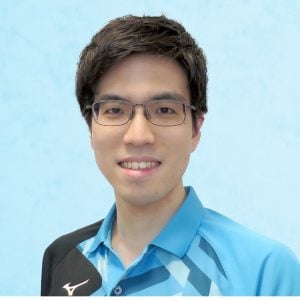
Inspired by his experiences in the sport, Yuya Otaki, a recent graduate of Johns Hopkins University’s Engineering for Professionals Systems Engineering program, has combined his passion for table tennis with systems engineering to create an innovative training tool. His capstone project, the Smart Table Tennis Training System (ST3), offers a data-driven approach to improving skills for both amateur and advanced players: no need for coaches or referees.
Otaki’s project focused on overcoming a table tennis challenge he experienced firsthand: accessible, accurate tools to measure performance and give players a way to use data to track their progress and improve their game.
“I have been training at a table tennis school for approximately seven years, but have lacked any quantitative metrics for my shots, such as speed, spin, and racket angle,” said Otaki, an IT manager at FineToday, a Japan-based personal care company.

The ST3 system includes wireless sensors attached to the racket, cameras to capture both player and ball movement, a ball-shooting unit with a tank, and a target marker projector. Machine learning algorithms process sensor data and camera images to estimate ball speed, rotation, and trajectory, as well as identify stroke types like forehand or backhand. The system also self-calibrates ball-shooting accuracy and highlights differences in player movements compared to professional athletes to help players assess their performance. Using machine learning, it collects useful insights into performance and has an auto-umpire feature. According to Otaki, his unique system is designed to make high-quality training tools more accessible to amateur players who otherwise rely on coaches’ verbal feedback and repetition.
Before drawing up the system design, he conducted interviews with other table tennis players and coaches and applied Model-Based Systems Engineering (MBSE) to model system requirements and traceability. He also used tools like SysML diagrams and Magic Systems of Systems Architect software to ensure that the system met both functional and physical requirements.
The result? A system that, if developed, could help table tennis students at all levels improve their skill sets faster.
“The ST3 system will not only enable players to improve their table tennis skills efficiently but also allow table tennis school owners to offer enhanced programs, attracting more customers and increasing revenue,” he said.
For Otaki, this project represents more than just an academic achievement—it’s a step toward a larger personal goal.
“One life goal of mine is to run my own table tennis school,” he shared. “The ST3 system I designed here will be a unique facility for my school, and once developed, I could sell it to other schools not only to generate income but also to help more players willing to improve their table tennis skills.”